Rescuers search for survivors amid the rubble
“I was watching television with my children when out of nowhere the airstrike hit and buried us.”

At least eight people were reported to have died, with dozens injured in an air strike on the town of Adi Daero in Ethiopia’s northern region of Tigray, in late September.
Adi Daero was close to the front line at that time between the Tigray People’s Liberation Front (TPLF), who control the region, and the Ethiopian military and Eritrean forces supporting them.
Access to the area for journalists is strictly limited, so we’ve tried to work out what happened using eyewitness testimony, video footage and satellite imagery of the area.
What has been reported about the attack?
The TPLF say the Eritrean air force bombed a residential area in Adi Daero. They say it “dropped bombs… killing a number of civilians, injuring scores more and reducing residential homes to ashes”.
A senior Tigrayan official, Kindeya Gebrehiwot, claims that an Eritrean MiG-29 jet was involved.
“When they came to dig us out I asked them to rescue the children first” said one woman in a report on a Tigray television station.
“My pregnant daughter Beyenesh was dragged out unconscious and bleeding. They told me my grandson Michiwti had died instantly.”
The Ethiopian government has said its planes attacked the town, but insists it only hit military targets linked to the TPLF.
The pro-government Ethiopia Current Issues Fact Check has accused the TPLF of releasing “pre-drafted fallacious claims” that civilians were targeted.
On Twitter, the Ethiopian government says it carried out the airstrike
“Ethiopian National Defense Forces ensure that military assets are isolated from civilians before taking action,” a statement on Twitter says.
The government accuses TPLF supporters of fabricating claims about civilian victims
What is the evidence?
Video footage of the attack has emerged, some of which has been published online by a local Tigrayan television team.
The air strike was captured in a video posted online
One video appears to show the moment the area was hit on 27 September in Adi Daero.
There’s also video released by Tigrayan TV stations the next day – 28 September – showing people in civilian clothes looking for survivors amidst rubble from collapsed buildings.
Women and children can be seen in the video – at one point, a woman is being dug out of the rubble. There are two men in civilian clothes each with a gun, but we don’t know who they are.
Tigrayan TV shows the aftermath of the strike
Those interviewed in the footage describe a quiet day during the Meskel religious festival, which marks the finding of the cross that Jesus was crucified on, according to Orthodox Christian tradition.
“We didn’t think this would happen. There is no military activity here. This is just a neighbourhood of the poor,” a woman told Tigrayan TV.
There are clues in the videos, which helped us confirm it was from Adi Daero.
One video reveals a unique hill range in the background, which matches a hill to the west of the town as seen on Google Maps.
The tower of a mosque (top right) can be seen in the video
As the person filming pans the camera, the tower of a mosque can be seen briefly. This matches a tower seen in images of Adi Daero posted on Google Maps earlier this year.
The mosque is located north of the area that was hit and can be identified on Google Earth by the green dome.
The BBC has also looked at satellite images of the area before and after.
Satellite images of before and after the attack
These show a built-up residential district of symmetrical streets lined with buildings, and on satellite mages from 1 October, damage to one area is clearly visible.
An image from earlier in the year of the same network of streets shows no sign of damage..
What has the Ethiopian government said?
We’ve asked the Ethiopian authorities what were the military targets in the Adi Daero area at that time, but have not received a response.
On 17 October, an official statement was issued saying the army “endeavours to avoid combat operations within urban areas to prevent civilian casualties.” And it accuses the TPLF of using civilians as human shields and civilian facilities for military facilities.
“The government of Ethiopia deeply regrets any harm that might have been inflicted upon civilians…and will investigate such incidents,” it says.
Air attacks have been happening in other parts of this region, but an ongoing communications blackout makes it extremely challenging to verify details.
The International Rescue Committee says a staff member working with the organisation was killed on 14 October during an attack on the town of Shire, south of Adi Daero.
Allegations of civilian casualties in other incidents have also emerged, but it’s been difficult to confirm these.
Additional reporting by Erwan Rivault and Kumar Malhotra
Reality Check branding




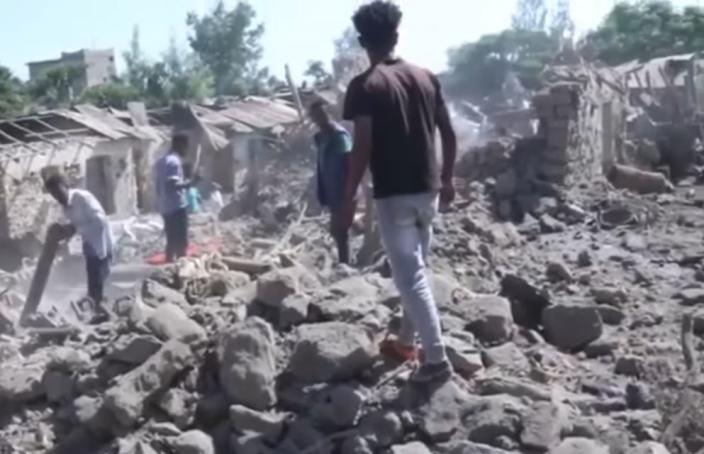
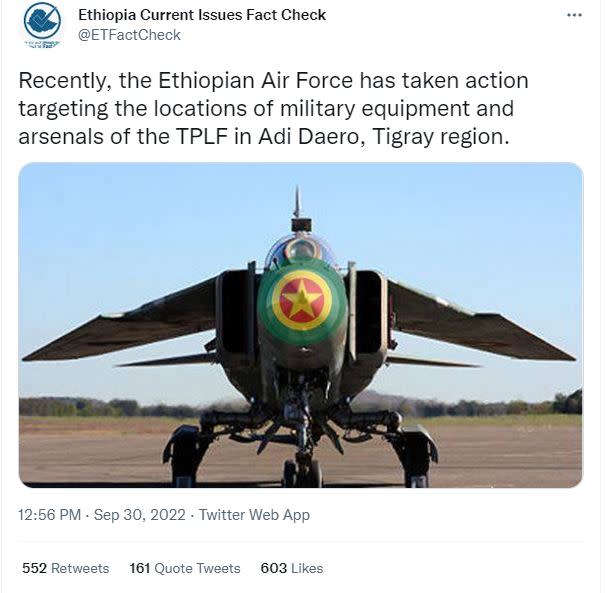
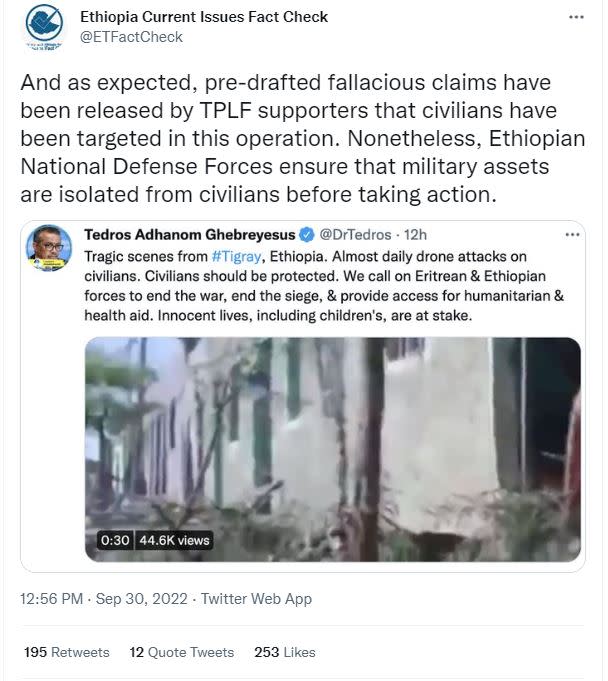
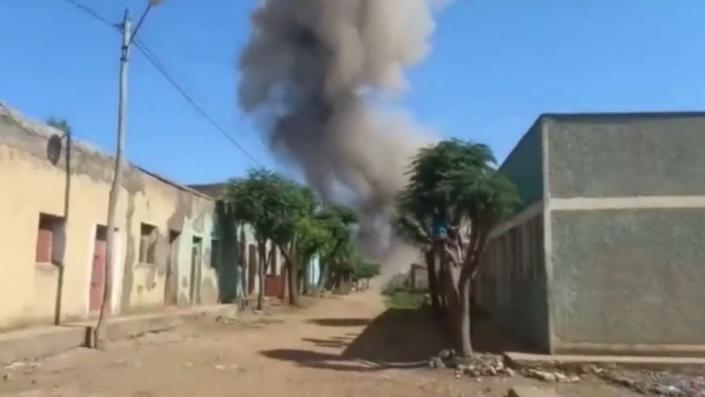
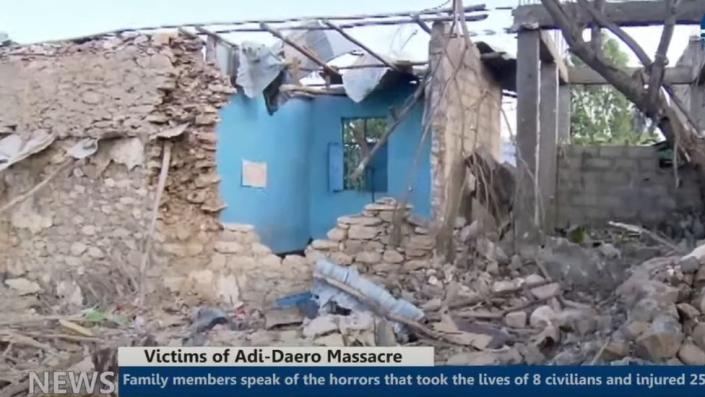
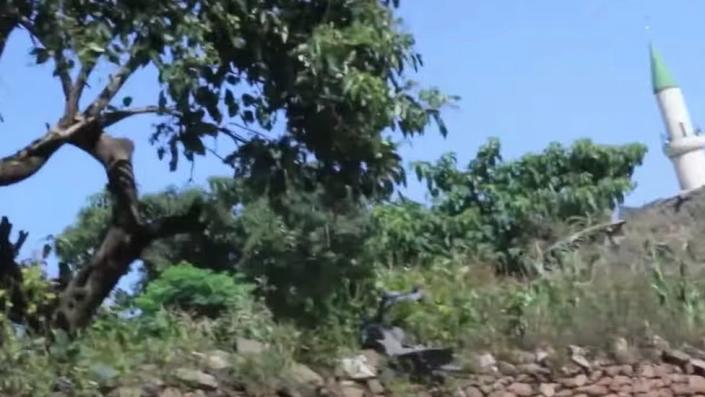
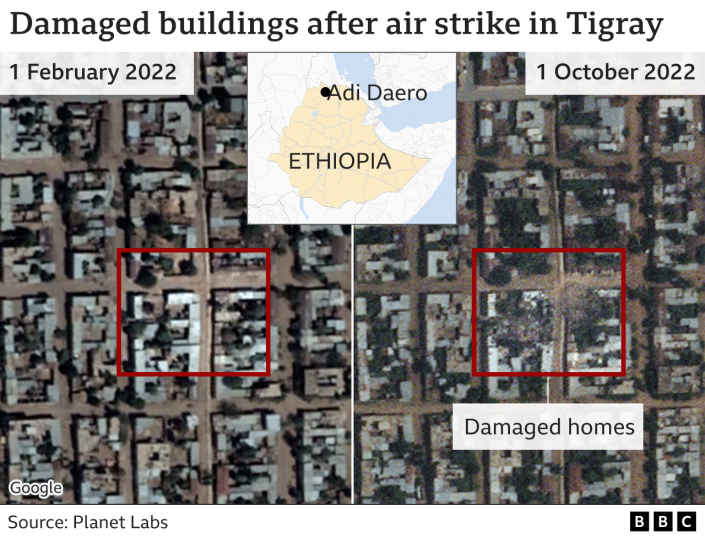




GIPHY App Key not set. Please check settings